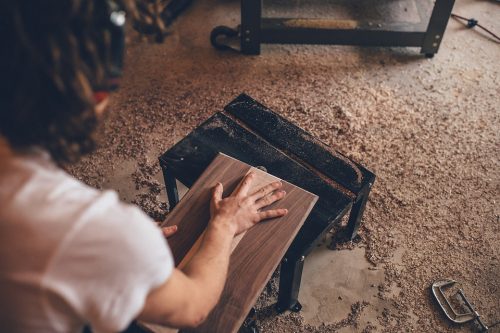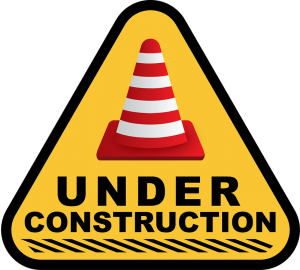If you work in a woodshop, you know how important it is to have a dust collector in the shop. A dust collector is a great machine that cleans the air, giving you clean and safe, breathable environment. In other words, once you have invested in a dust collector, you must also know how to clean and maintain your dust collector.
If you have a small dust collector instead of the industrial dust collector, by all means, you can clean it yourself. However, for the industrial dust collector, it’s easier to call the service maintenance to clean and change the filters.

But for now, this article will focus on those who have small or regular size dust collectors that are in the workshops. This guide will provide tips that will help you to clean and maintain your filter bags to keep your dust collector in good shape and minimize the exposure of dust particles in your shop.
Maintaining and cleaning is an important part of owning dust collection machine. You must clean and change the air filter regularly for fresh, breathable air and to increase the life of your machine so it can run in excellent condition. If your dust collector is switch on a regular basis, it is important to clean the air filter regularly too.
Cleaning Tips For A Dust Collector
Before you start cleaning and removing the dust from the air filters, it is crucial to wear a facemask to prevent you inhaling any dust from the filter bags. First, turn off the machine and allow the fan to stop running. You do not want the dust to spread all around the room while the fan is still running.
Most dust collectors have a quick release ring, which will allow you pull the bag off quickly. Carefully, take the bag outside so you can empty and clean it. Next, it’s entirely up to you if you want to vacuum or wash the filter bags. Although, it’s better to wash the entire bag so it can last for a longer period. Next, if the dust collector has removable filters, remove it gently before you clean the bags.
Next, empty the bags and dump the dust into a trash bag. If its weigh heavy, you will need assistance to dump the dust into a garbage bag. Once you have emptied the bag, just rinse the bag with water. It’s an easy method that requires very little time. Make sure not to miss any spots and clean it twice if you must. Next, dry the bags and make sure there are no wet spots before you put it back into the dust collector
Now, if you decided to vacuum the filter bags instead of washing it. Before you clean the bag, it is imperative to remove the dust off first. Next, turn the bag inside out; let the vacuum suck out the remaining dust. Make sure to clean every spot in the bag.
Once the bag is washed; remember, to clean up your space by using the vacuum. If you used water hose instead of the vacuum, just spray the water around the ground to clean the area up. As a matter of fact, clean the space properly so the dust particles don’t occupy your air.
How To Maintain Your Dust Collector
 As you know by now, the dust collector is an essential machine that allows you and others to work in a clean, safe environment. In the above, you read how to clean your dust collector bags. Also, you know by now that it is imperative to clean your bags regularly for your dust collector to perform to its full potential.
As you know by now, the dust collector is an essential machine that allows you and others to work in a clean, safe environment. In the above, you read how to clean your dust collector bags. Also, you know by now that it is imperative to clean your bags regularly for your dust collector to perform to its full potential.
However, cleaning isn’t just enough to make sure your dust collector is working smoothly. You need to maintain your dust collector regularly as this will extend its shelf life.
With this in mind, you can start first, by creating a maintenance schedule that has all the details and follows up that will allow you to monitor and check on a frequent basis. This method is optional; nevertheless, it’s good to have a schedule list. This schedule should be compile of daily, weekly, monthly and yearly tasks that will help your dust collector to run smoothly. In other words, the dust collector will run better if there’s a routine check up on maintenance.
Moreover, here are some simple yet effective duties that could help you to maintain your dust collector. First, create a temperature checklist for your pressure gauge. It’s good to know and check your temperature for the pressure gauge on the daily basis so it performs well. Make sure it doesn’t overheat by checking the temperature; if the temperature rises or decreases rapidly, it means that there’s a problem.
Not only that, the pressure gauge will let you know if the filters are blocked. It rarely happens as you do regular basis of cleaning and maintenance. Nonetheless, if the filters are blocked, just switch off the dust collector and empty the collector bag. Above all, check the pressure gauge on the regular basis with a temperature checklist. If the bag gets too full and you didn’t empty it out, the suction will get blocked and as a result, the pressure will build up, and the suction will be ruined.
Moreover, keep an eye close on the differential pressure at all times to ensure proper operation of the machine. Again, make a checklist for this task. As a matter of fact, the differential pressure is used as the primary data metric to determine how a dust collector is operating. Additionally, the metric determines the pressure by measuring the two different pressures to determine how much the resistance the filters are adding to the machine. Also, you must monitor the differential pressure as part of maintenance but also, to see if there’s any need of modification to the machine.
Two kinds of differential pressures can tell you how the machine is running:
1. High differential pressure
If you see a consistent high differential pressure, it means that the filters are blind. In other words, it’s a sign that the filters need to be replaced. Using blinded filters for a period can lead to damaging your dust collector. The dust cakes will build up quickly and as a result, there is a higher chance that it will leak.
Nonetheless, any sudden changes in the differential pressure can be caused by shifts in the condition or process in the venting system. Consistent high differential pressure could also mean that the system is undersized and not able to keep up with the dust load. In the other hand, it could also be another sign, which indicates there’s a leak near the cracks in the structure. As a result, this could allow cold air to enter that causes condensation on the filters, resulting in the wet and sticky dust.
2. Low differential pressure
 If it’s a low differential pressure, it means that the bag has holes, tears or/and loose seams in the bags. Therefore, it’s good to check the filters’ bag for holes or tearing. If there are holes or little tearing in the filters, the dust particles will pollute your work areas. Next, create another checklist to keep an eye out for any leaks on the duct connections. It is crucial to check these leaks on a daily basis so you don’t face any severe problems. Not only that, a sudden low drop in the differential pressure can cause serious failures to the machines. It can lead to a potential fire or explosion hazard. It could be some reasons from; the dust accumulate by upstream that prevents the dust from reaching the baghouse, or the dust is collecting in the ductwork and thus, blocking off the airflow.
If it’s a low differential pressure, it means that the bag has holes, tears or/and loose seams in the bags. Therefore, it’s good to check the filters’ bag for holes or tearing. If there are holes or little tearing in the filters, the dust particles will pollute your work areas. Next, create another checklist to keep an eye out for any leaks on the duct connections. It is crucial to check these leaks on a daily basis so you don’t face any severe problems. Not only that, a sudden low drop in the differential pressure can cause serious failures to the machines. It can lead to a potential fire or explosion hazard. It could be some reasons from; the dust accumulate by upstream that prevents the dust from reaching the baghouse, or the dust is collecting in the ductwork and thus, blocking off the airflow.
Hence, if you see any of these signs, it is best to get an expert to check on these things. Beware of false readings as this can lead you to make poor decisions regarding maintenance and operation. With this in mind, create a checklist and monitor the readings on a regular basis. Lastly, do not neglect the differential pressures’ readings. Many woodshops are required to operate the dust collector according to specific emission levels approved by air quality permit officers.
On the other hand, clean the switches and electrical boxes on the same day you cleaned the collector bags. It’s easier and less hectic when you’re doing these two tasks on the same day. Again, create a weekly basis checklist. It is important to clean the collector bags as there are chances that the dust particles can make their way into improper electrical components, result in higher chances of the risk of fire.
If you need to replace the switches and electrical boxes, it is best to get an expert as they know what is best for your dust collector. Just make sure that you use mechanical certified IP components and switchgear. Not choosing the right IP components can lead to a higher risk of explosion and fires. Therefore, it is important to be careful when you’re maintaining these elements. Lastly, ensure the exhaust fan is always in top condition. If you hear any noise or feel any unusual vibration, immediately contact an expert, as these things are warning signs of a malfunctioning machine.
Conclusion
To conclude, if you want the dust collector to work efficiently, it is imperative to clean and maintain it regularly. Not only the dust collector will provide a clean and safe, breathable work environment but also decrease air pollution. Above all, perform regular cleaning inspections on the dust collector and with routine maintenance, it will boost the machine’s performance and life.



